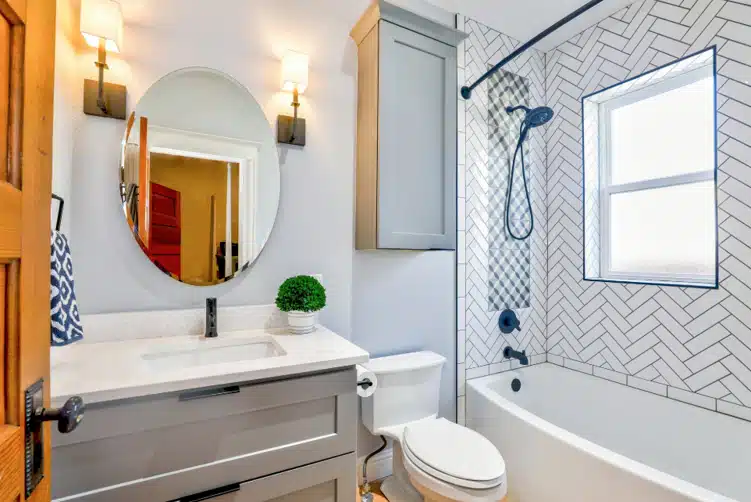Table of Contents
Introduction
Mold, an often invisible antagonist, lurks in many homes, posing threats to both the structure and the health of its inhabitants. In the quest for a healthier living space, addressing mold-related issues is paramount. Take, for instance, the concerted efforts in mold remediation Jersey City, which exemplify the community’s commitment to combating this pervasive issue. This article explores the journey towards achieving a mold-free home, discussing identification, remediation, and preventative strategies to ensure a cleaner and safer environment.
Understanding Mold: An Invisible Enemy in Your Home
The Biology and Growth Conditions of Mold: Mold, a type of fungus, thrives in moist and warm conditions. It reproduces through tiny spores that travel through the air, invisibly invading homes and establishing colonies in conducive environments. These spores can remain dormant until they find the perfect humid and warm conditions to grow.
Identifying Common Types of Household Mold: Several mold species commonly infest homes, including Aspergillus, Penicillium, and Stachybotrys (often known as black mold). Each variety poses varying levels of risk and requires specific approaches for effective treatment. Aspergillus, for instance, is known for causing respiratory issues, while Stachybotrys is infamous for its toxic effects.
Health Implications of Living with Mold: Prolonged exposure to mold can lead to respiratory issues, allergic reactions, and in severe cases, neurological problems. It’s especially hazardous for individuals with asthma or compromised immune systems, where mold exposure can exacerbate their conditions.
Detecting and Assessing Mold Infestation
Signs and Symptoms of Mold Presence: Identifying mold presence can be challenging. Telltale signs include musty odors, visible growth on walls or ceilings, and excessive humidity in the home. Peeling wallpaper, water stains, and discoloration are also indicators of potential mold growth.
Professional Mold Inspection and Testing: Engaging professionals for mold inspection is crucial for accurate detection. They use advanced tools and techniques to identify the mold species and the extent of infestation. This precise identification is vital for choosing the correct remediation method.
Evaluating the Severity of Mold Infestation: Assessing the severity is vital in determining the appropriate remediation strategy. This involves considering the infested area’s size and the mold type. A small patch of mold might be handled with DIY methods, whereas extensive growth typically requires professional intervention.
Effective Strategies for Mold Remediation
DIY Remediation Techniques for Minor Infestations: For minor mold issues, DIY methods like using diluted bleach solutions or vinegar can be effective. However, safety precautions, such as wearing protective gear, are essential. It’s crucial to ensure that the area is well-ventilated during the process to avoid inhaling fumes or spores.
Professional Mold Remediation – When to Call the Experts: For extensive or toxic mold infestations, professional remediation is necessary. Experts in this field have the equipment and expertise to safely and effectively eradicate mold. They also ensure that the mold is removed completely, preventing future growth.
“Mold Remediation Jersey City” – A Case Study in Professional Intervention: This case study highlights how professional mold removal in Jersey City successfully addressed severe mold issues, using advanced techniques and ensuring long-term prevention. The intervention included identifying the moisture source, containing the affected area, and using HEPA-filtered equipment to remove mold.
Preventative Measures for a Mold-Free Home
Routine Home Maintenance to Prevent Mold: Regular home maintenance, such as fixing leaks and ensuring good drainage, plays a crucial role in preventing mold growth. It’s also important to clean and dry any wet areas promptly to prevent mold from taking hold.
Improving Home Ventilation and Moisture Control: Adequate ventilation and moisture control are vital in mold prevention. This includes using dehumidifiers, ensuring proper ventilation in bathrooms and kitchens, and keeping indoor humidity levels in check. Additionally, using exhaust fans and opening windows can help reduce moisture in the air.
Selecting Mold-Resistant Materials and Products: Using mold-resistant materials in home construction and renovation, such as mold-resistant drywall and paints, can significantly reduce the risk of mold infestation. These materials are especially useful in areas prone to moisture, like bathrooms and basements.
Navigating Legal and Insurance Aspects of Mold
Understanding Homeowners’ Insurance Coverage for Mold: Often, homeowners’ insurance policies have specific stipulations regarding mold damage. Understanding the coverage limits and conditions is crucial for financial planning in mold remediation. Some policies may cover mold damage if it’s a result of a covered peril, like a burst pipe.
Legal Responsibilities and Rights in Mold Remediation: Homeowners and landlords have legal obligations to address mold issues. It’s essential to understand these responsibilities to ensure compliance and protect residents’ health. In rental situations, landlords are typically responsible for addressing mold issues, especially if they impact the property’s habitability.
The Importance of Documentation and Professional Assessments: Keeping detailed records of mold assessments, remediation efforts, and maintenance can be invaluable, especially for insurance claims or legal purposes. Documentation should include before and after photos, a detailed account of the remediation process, and any professional assessments or reports.
Conclusion
Achieving a mold-free living environment is essential for the health and well-being of home occupants. Through understanding, early detection, and effective remediation strategies, homeowners can successfully navigate the challenges posed by mold. Whether through DIY efforts or professional intervention, the goal remains clear: a cleaner, safer home free from the insidious threat of mold. By being proactive and vigilant, homeowners can ensure their living spaces remain healthy and enjoyable for years to come.








